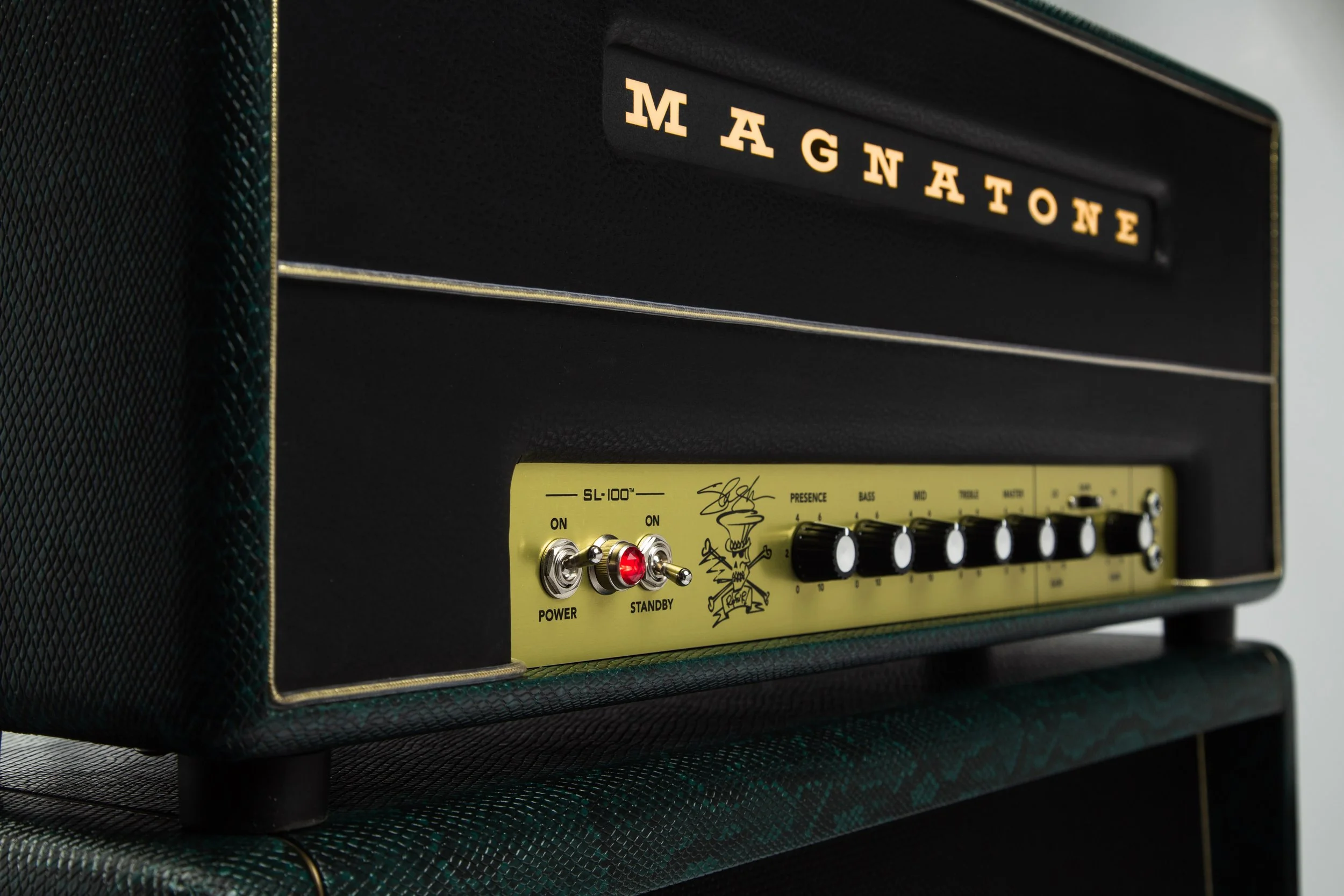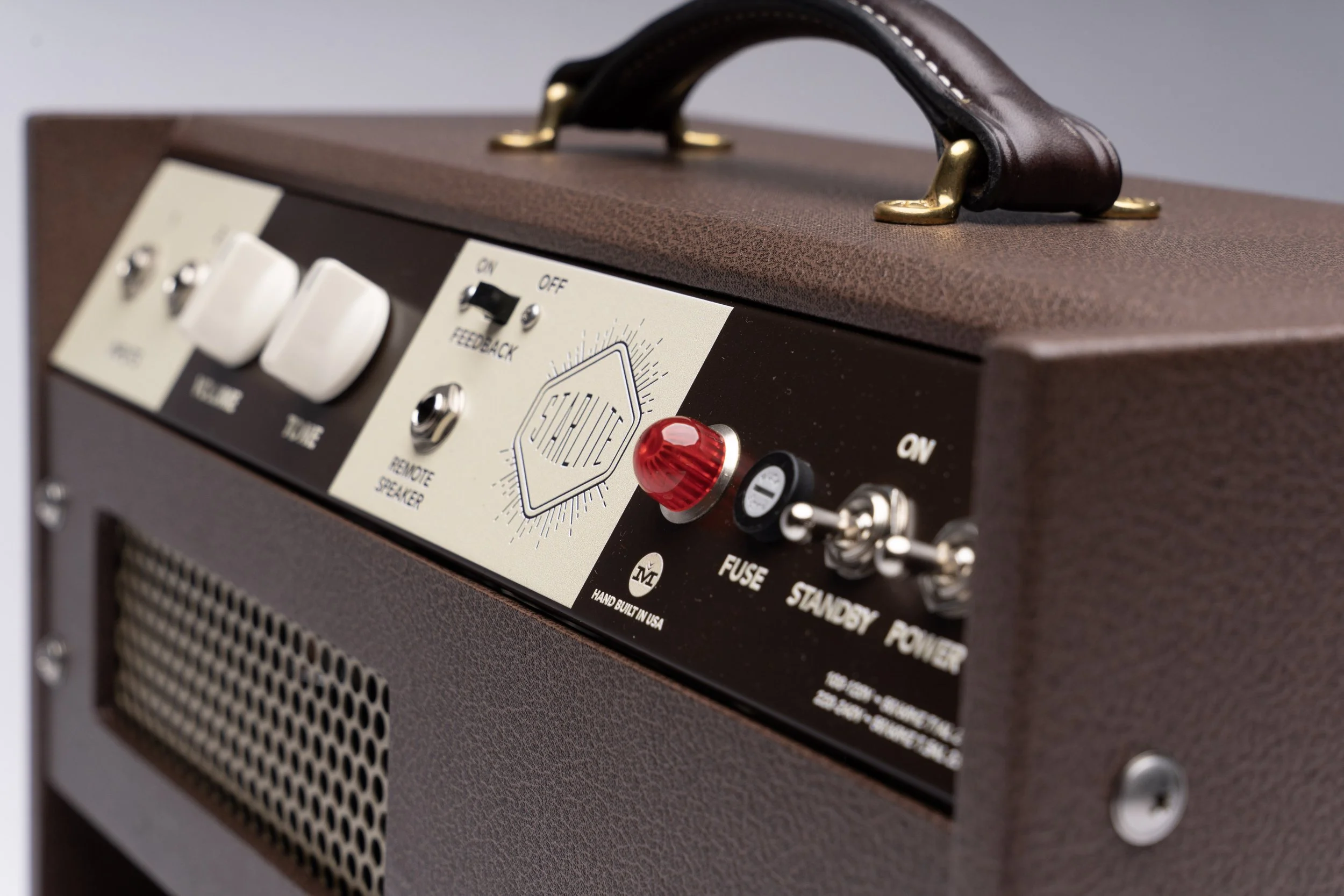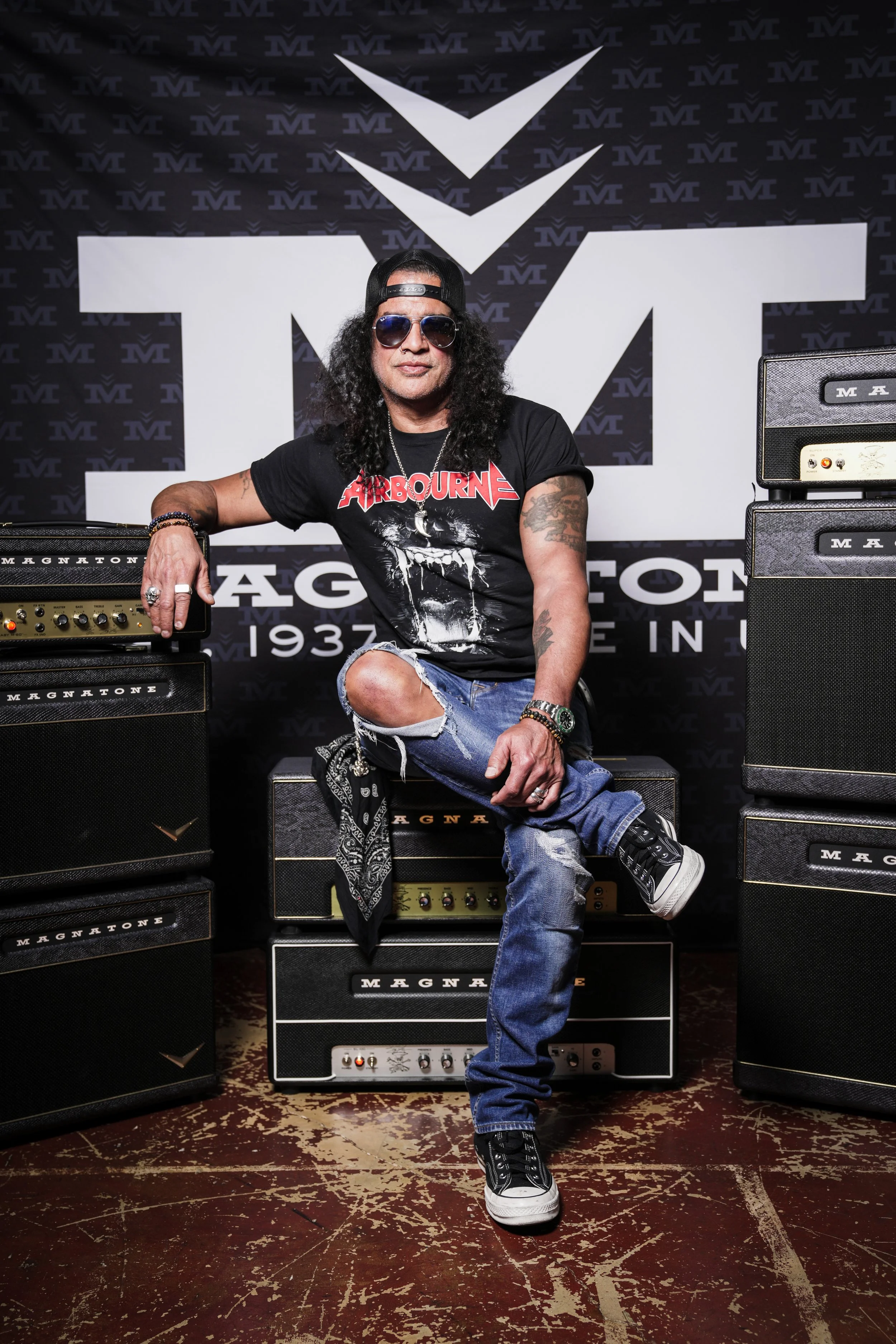Strings Attached: A Family Legacy and the Reinvention of Magnatone
by Craig Kaminer / photography by John Lore and Brad Beenders
In a world increasingly driven by digital convenience and mass production, there is something singularly seductive about analog craftsmanship — the imperfect hum of a tube amplifier warming up, the vibrato of a guitar tone swirling through a room, the whisper of legacy stitched into sound. Ted Kornblum, founder of the resurrected Magnatone amplifier company, understands this allure intimately. His is a story not just of entrepreneurial daring but of reverence — for sound, for heritage and for the enduring value of things built to last.
Ted Kornblum / photo by John Lore.
Magnatone may not be a household name today — or yet — but for connoisseurs of rock, blues and vintage tone, the brand is steeped in near-mythical status. First founded in Los Angeles around 1937, Magnatone was once a thriving American manufacturer located across from what is now Los Angeles International airport with up to 450 employees and multiple facilities. The company became known for its stylish, high-fidelity amps and was the first to develop pitch-shifting vibrato using a non-moving part — a true analog innovation in the 1950s. But like many niche brands of that era, by the late 1960s, Magnatone eventually faded into obscurity.
What drew Kornblum to the defunct brand decades later was not nostalgia alone — it was possibility.
“What intrigued me about Magnatone was that it was a boutique and high-end brand back in the day,” he says. “It had style and fashion through the design of the product and the advertising campaigns. It hadn’t been screwed up. It was truly a 100 percent American-made brand — and it still is, other than a few parts.”
Close-up of Slash Series of amps. / photo by Brad Beenders.
Pano Stereo Control Panel. / photo by Brad Beenders.
Back panel of amp. / photo by Brad Beenders.
Kornblum’s own lineage reads like a who’s who of American music manufacturing. His grandfather, Bernard Kornblum, founded St. Louis Music Supply in 1922. His father, Gene Kornblum, expanded the company dramatically, bringing brands like Ampeg, Crate Amplifiers and Alvarez Guitars into the global spotlight. Growing up in St. Louis, Ted was immersed in the business from the start — hauling equipment to soundchecks as a teenager, photographing artists and absorbing the rhythms of the industry like a backstage pass to destiny. However, he paid his dues outside the family business before officially joining through working for other guitar companies plus he received his BA and MBA at the University of Denver.
“I was 16 and bringing guitars to concerts at the Arena or Kiel,” he recalls. “I’d take photos of the bands with our gear. I was probably one of the youngest artist relations people ever. It was a crash course in what artists want and how sound really works.”
That combination of hustle and humility would prove invaluable when, years later, he stumbled across the dormant Magnatone brand name and saw an opportunity — not just to bring it back, but to elevate it.
Before anyone knew he owned the trademark, Kornblum quietly built a collection of over 400 vintage Magnatone pieces — vacuum tube amplifiers, record players, solid body electric guitars, lap steels, even coin-operated radios — to better understand the DNA of the brand. “I needed to physically tell myself this was a calculated risk,” he explains. “Seeing the breadth of what they had made gave me a roadmap for the future.”
Super Fifteen Amp with case / photo by Brad Beenders.
And, what a future he has charted.
In 2013, Magnatone began building new amplifiers in a dedicated St. Louis facility, hand-wired by a team of passionate technicians — many of them young, many of them drawn to the tactile beauty of analog craftsmanship in an increasingly virtual world.
“It’s amazing how many young people today recognize the value of classic rock, of real tube amp sound,” Kornblum says. “To cut wire with your hands, to solder circuits and then to hear the result at a concert or on TV — that’s deeply satisfying. They know they’re part of something authentic.”
Manufacturing the way it always has been done at Magnatone. / photo by John Lore.
Overhead look of control panel being hand assembled in St. Louis. / photo by John Lore.
All in a day’s work of hand-made control panels. / photo by John Lore
Authenticity, of course, is the currency of today’s luxury market. Just as fashion houses revive heritage logos and automakers dust off iconic silhouettes, the resurrection of Magnatone taps into a larger cultural moment — a yearning for originality, craftsmanship and story.
Neil Young and Billy Gibbons of ZZ Top were the first two to play through the newly resurrected amps. Each had wildly different visions: Young likes an amp with natural tube power amp distortion and of course Magnatone’s patented stereo vibrato effect intact; Gibbons wanted a gain-heavy amp with modern features like an effects loop and retro-futuristic aesthetics.
ZZ Top’s Billy Gibbons on stage with array of Magnatone amps / photo courtesy of ZZ Top.
British rocker Slash / photo by Brad Beenders.
“The key to understanding artists,” Kornblum notes, “is through their guitar techs. They’re the ones who know the minutiae. My relationships with Elwood Francis from ZZ Top and Larry Cragg from Neil’s camp made all the difference.”
Since then, Magnatone’s artist roster has quietly expanded to include Slash, Jeff Beck, Brandi Carlile, Jason Isbell, Sturgill Simpson, Richard Fortus and Lukas Nelson. Notably, all of them buy their amps. “We don’t give them away,” Kornblum says. “That’s how I know they really want them.”
The amps themselves are as much works of art as they are tools of the trade — visually distinct, sonically rich and built with an obsessive attention to detail. The company's “Master Collection” delivers a robust, gain-driven tone that appeals to rock icons like Gibbons, Slash and Beck, while their Traditional Collection models preserve the purity of dynamic range and touch sensitive responsiveness tube tone.
Desk of Ted Kornblum with image of Neil Young on wall. / photo by John Lore
“We made a deliberate decision to separate clean and distorted sounds and design the amps to reflect that. If you do it right, you can sell two amps to the same customer,” Kornblum adds with a smile.
But for all the talk of vintage fidelity, Magnatone amps are far from museum pieces. The brand is positioned as a living legacy — one that could expand into hi-fi record players, Bluetooth speakers and sound playback systems, many inspired by the company’s original designs.
“We don’t want to be everything to everybody,” Kornblum says. “But I do want to collaborate with others — designers of complimentary brands who are experts in hi-fi or outboard effects pedals. I think that’s the next phase of this story.”
Still, Magnatone’s soul remains resolutely analog. The choice to stick with vacuum tube technology, despite its imperfections, is a deliberate one. “Tubes are warm. They breathe. They’re responsive. That’s why we use them,” he explains. “It’s an extension of the player’s body, like a dance between the guitar and the amp.”
That ethos — warmth, care, personality — extends to every corner of the company. Magnatone is still privately owned, made in St. Louis and powered by a tight-knit team of engineers like Obeid Khan, Greg Geerling, George McKale, Dan Ryterski and Chris Villani, all of whom came from the St. Louis Music legacy. “It’s kind of like forming a band,” Kornblum says. “Everyone plays a different part and that creates the sound.”
Even Kornblum’s approach to artist relations feels less corporate and more old-school rock ‘n’ roll. “I’ve got a Rolodex — a real one,” he laughs. “I used to go to concerts early in the afternoon, find the guitar techs and see if what I had sparked their interest. The key is being genuine, being trusted. Then your product has to perform.”
As Magnatone approaches its 90th anniversary in 2027 — a milestone Kornblum plans to commemorate with a book and documentary — the company is more relevant than ever. Not because it follows trends, but because it defies them.
“Magnatone is about making things the right way, with integrity,” Kornblum says. “It’s not about being the biggest. It’s about lasting value — heirloom value. I’m humbled by the musicians and consumers who invest in us. They have a lot of choices. So, we better make something worthy of that choice.”
In the end, what Kornblum has built is a testament to American ingenuity, musical legacy and the quiet power of passion over profit. Magnatone may have once been forgotten — but under his stewardship, its voice rings louder than ever.











